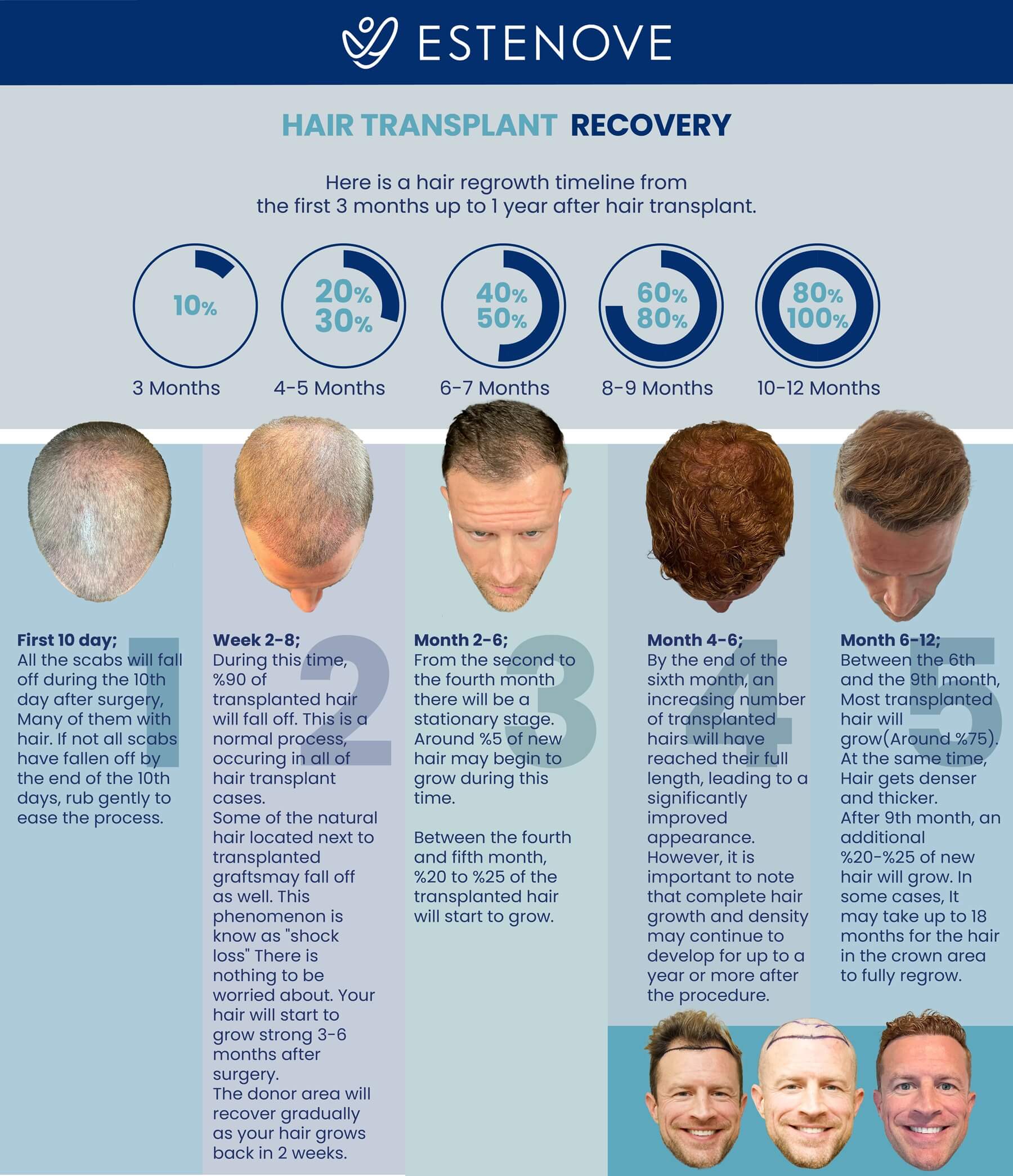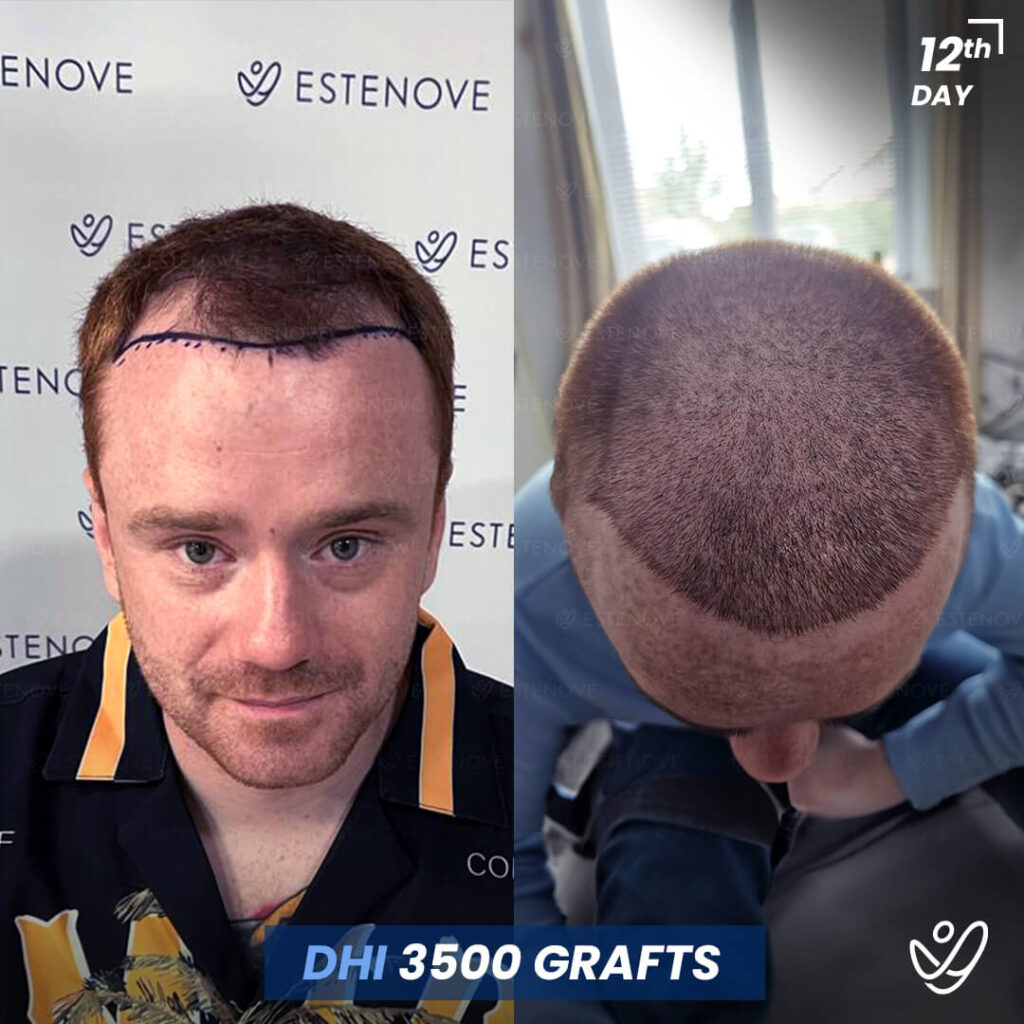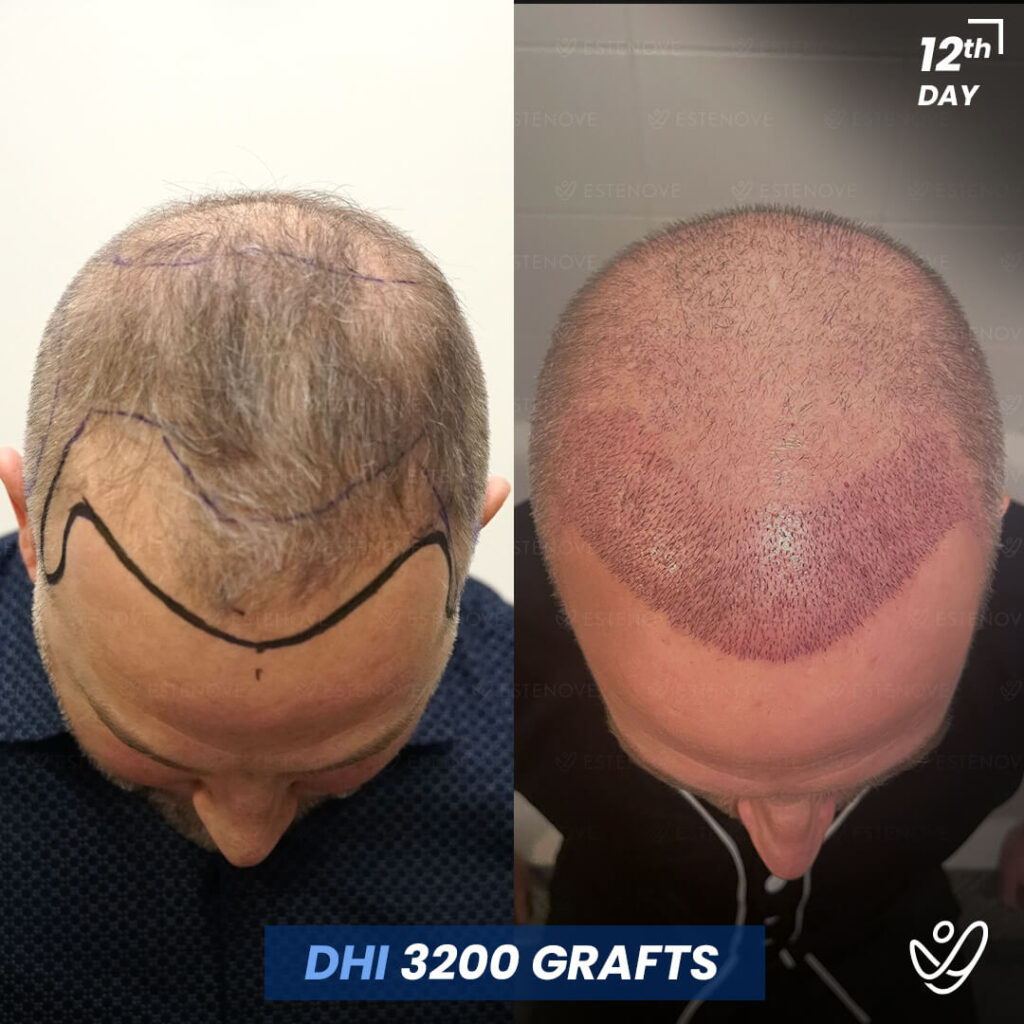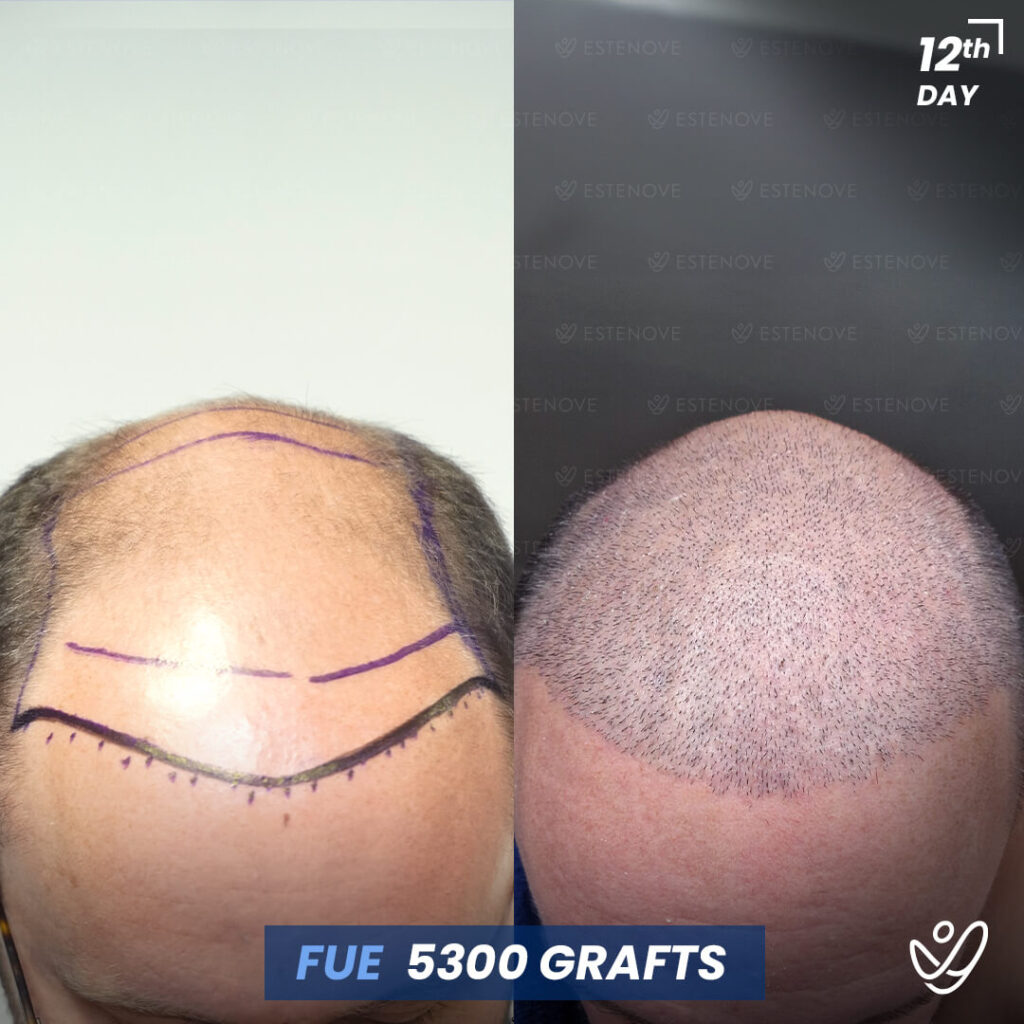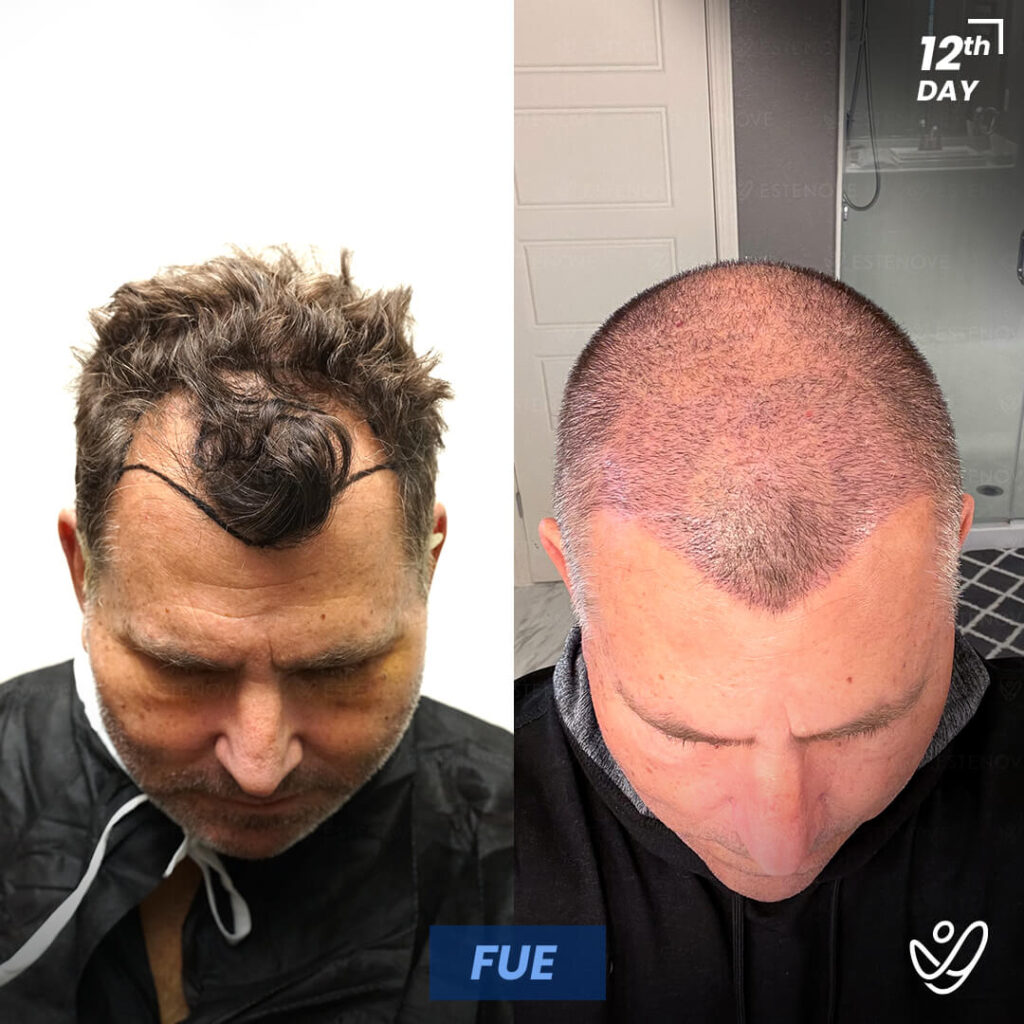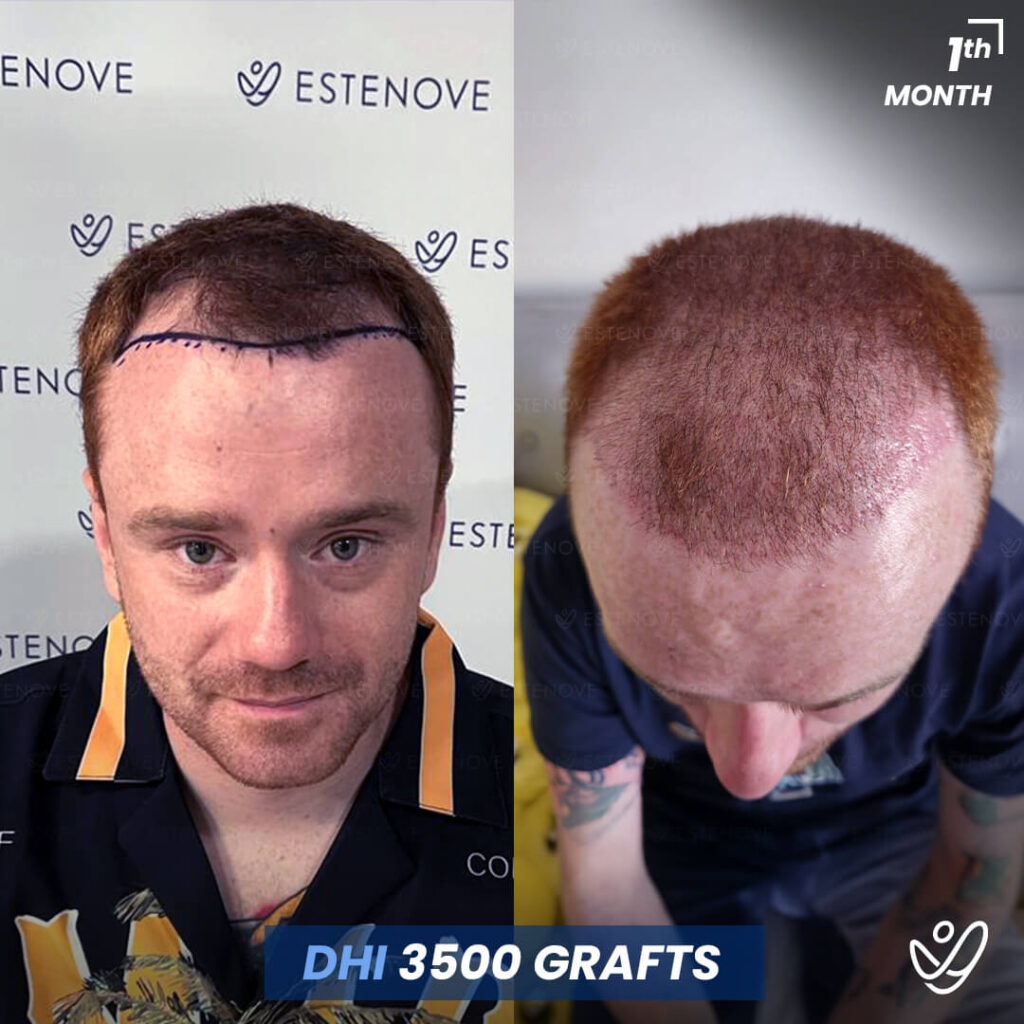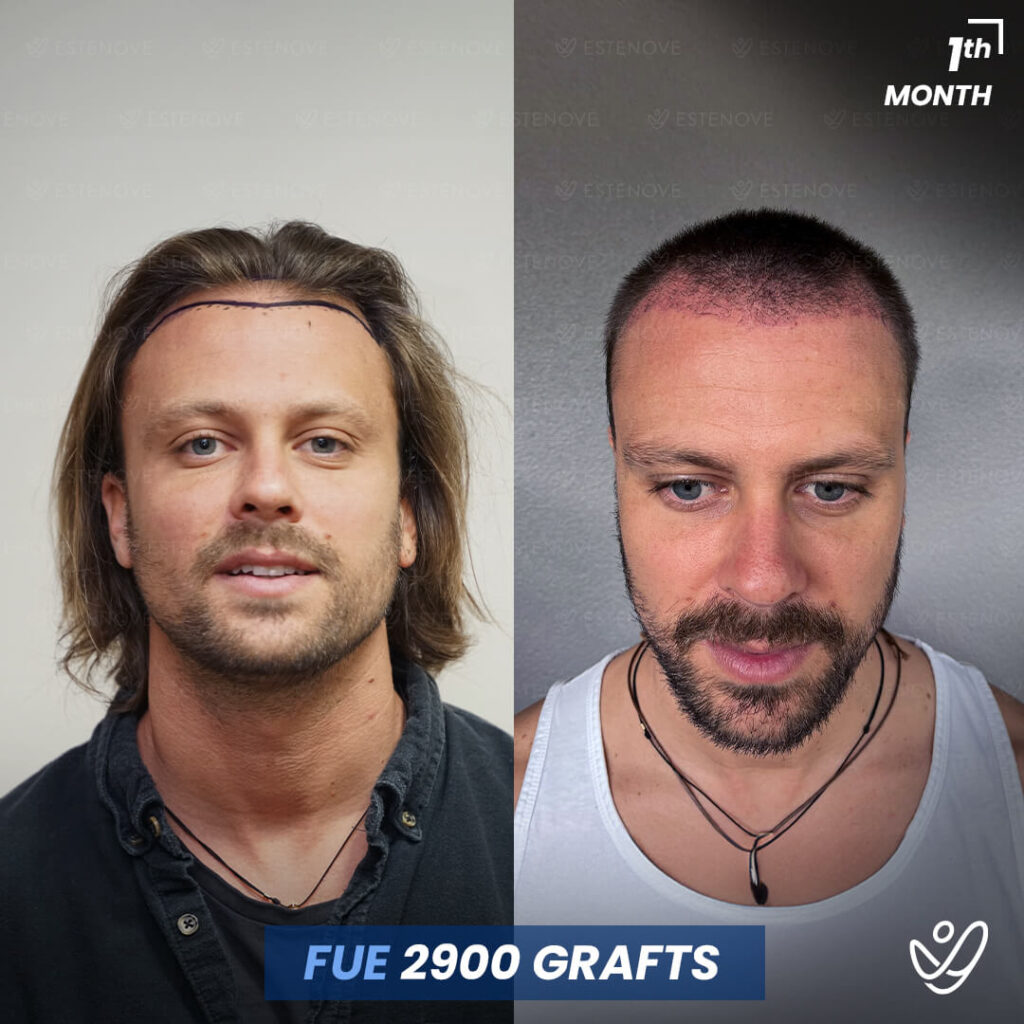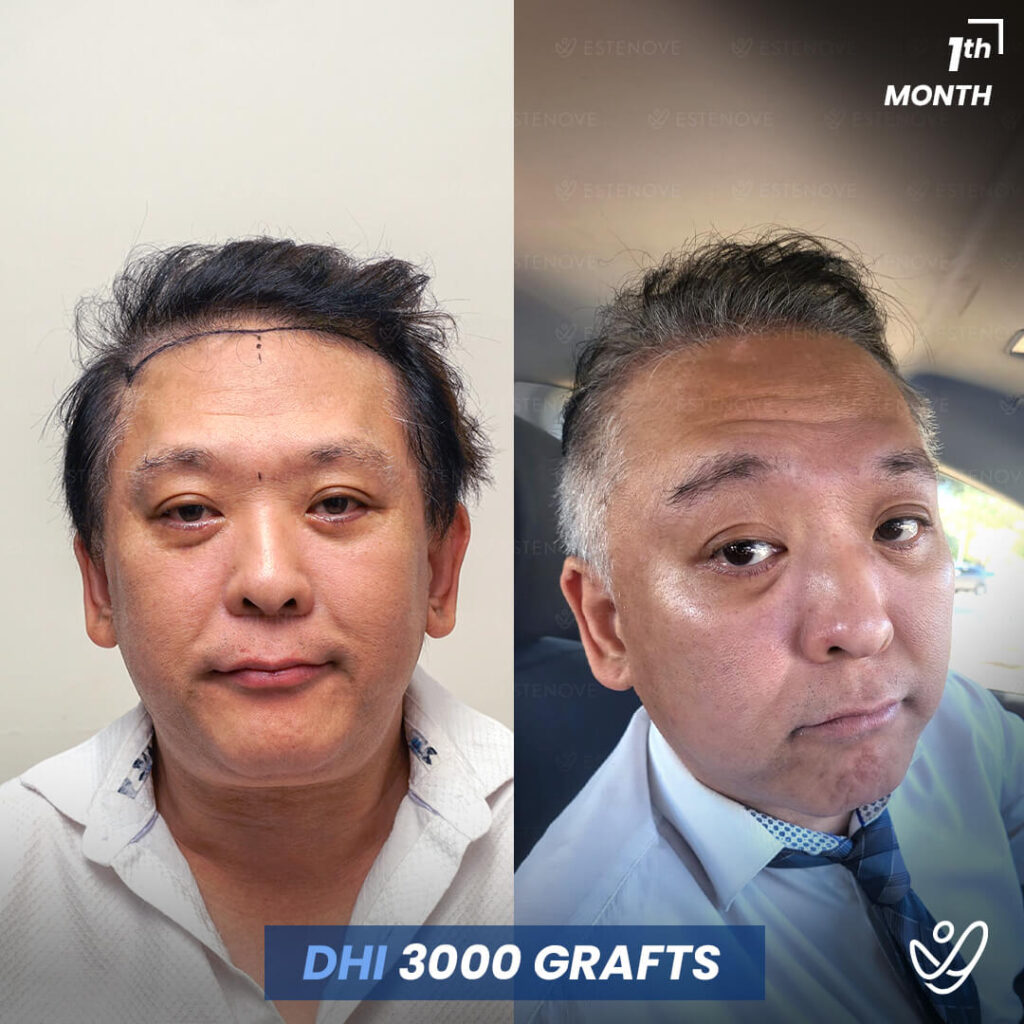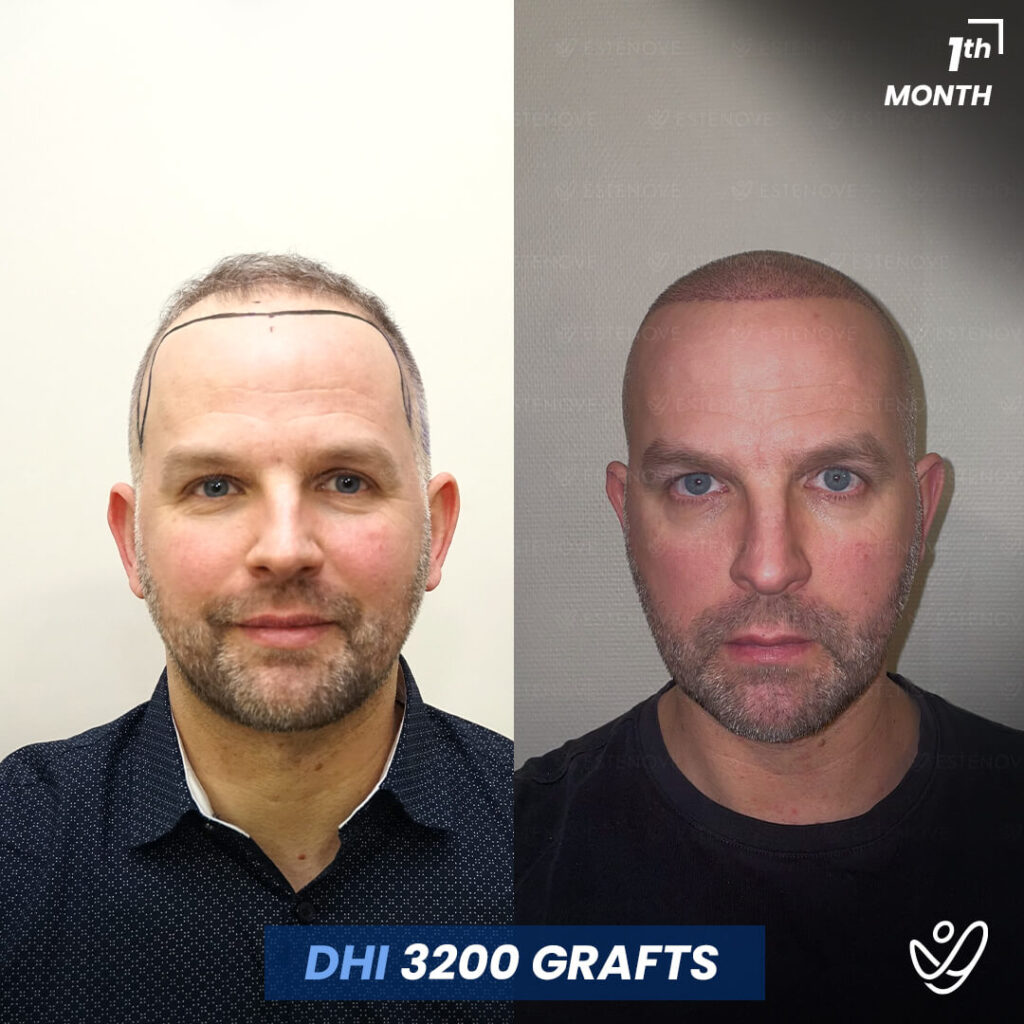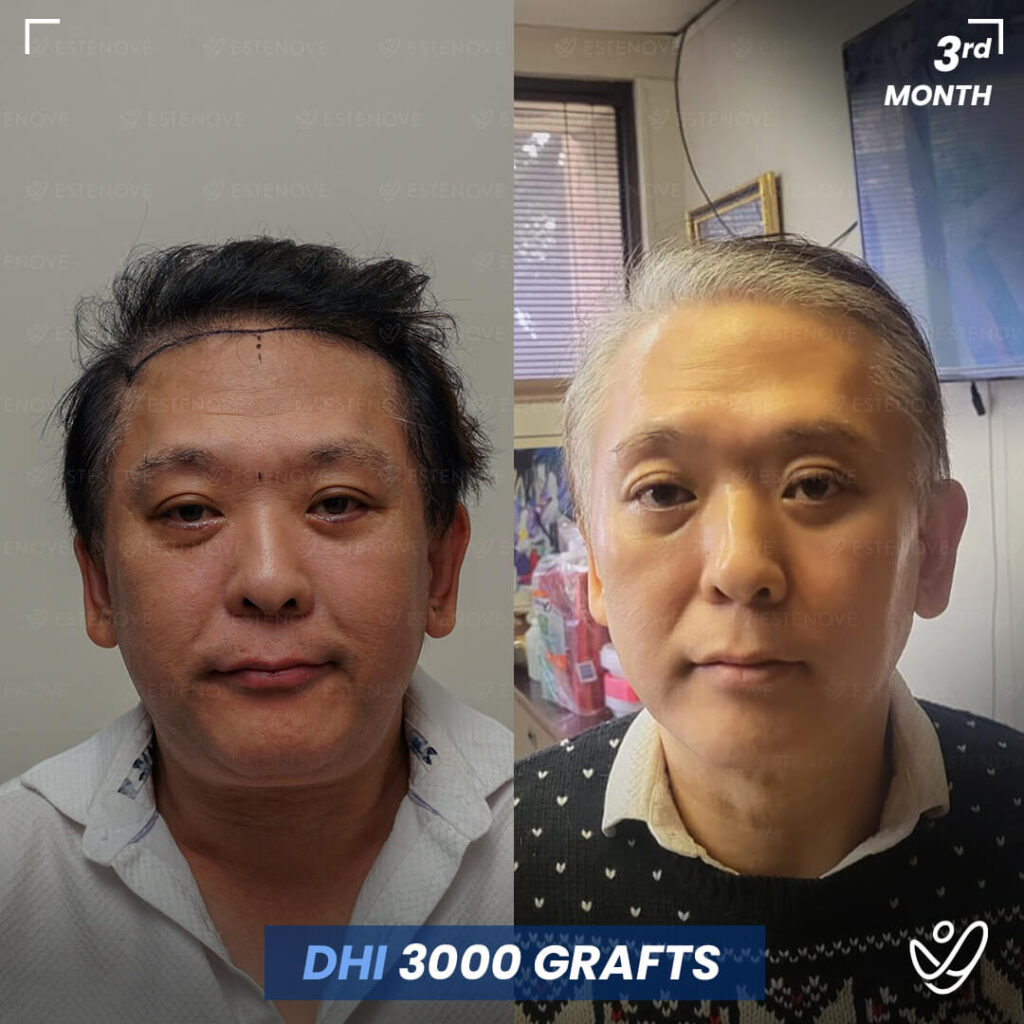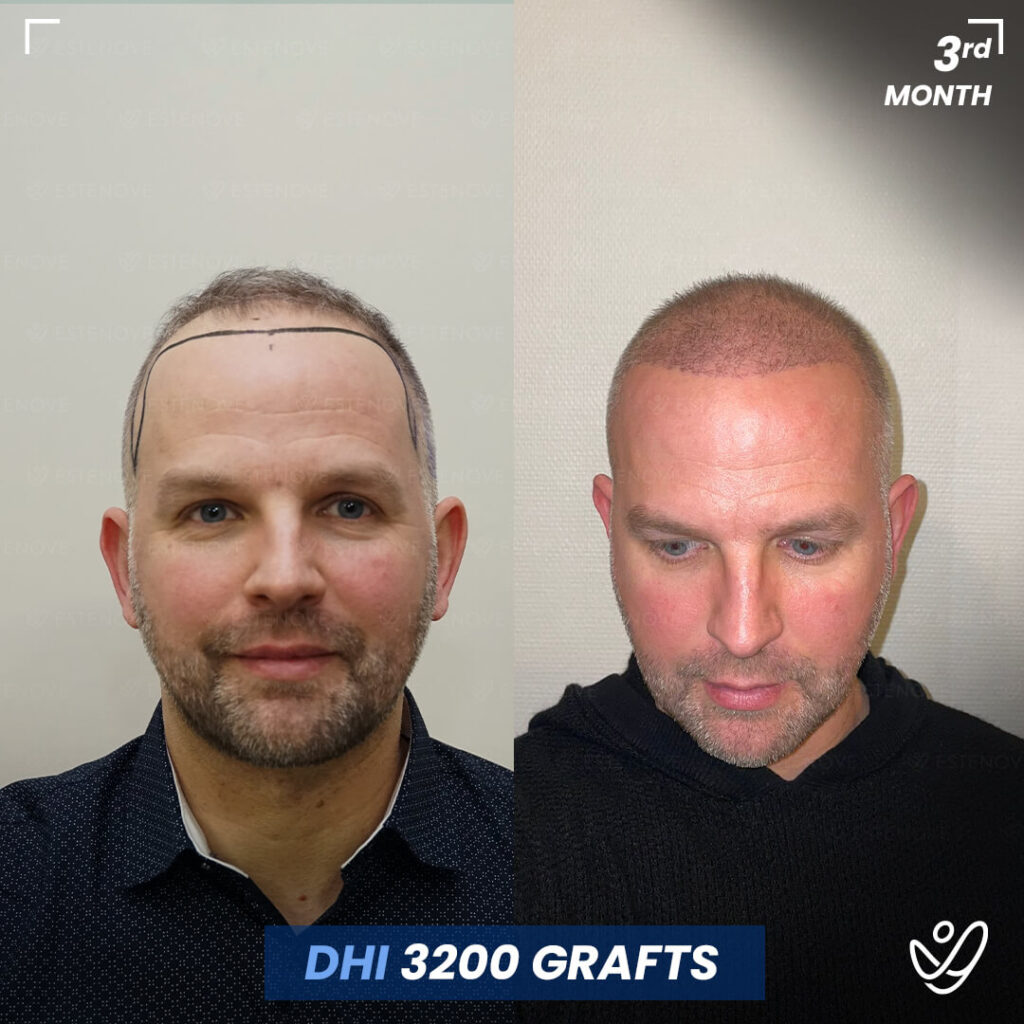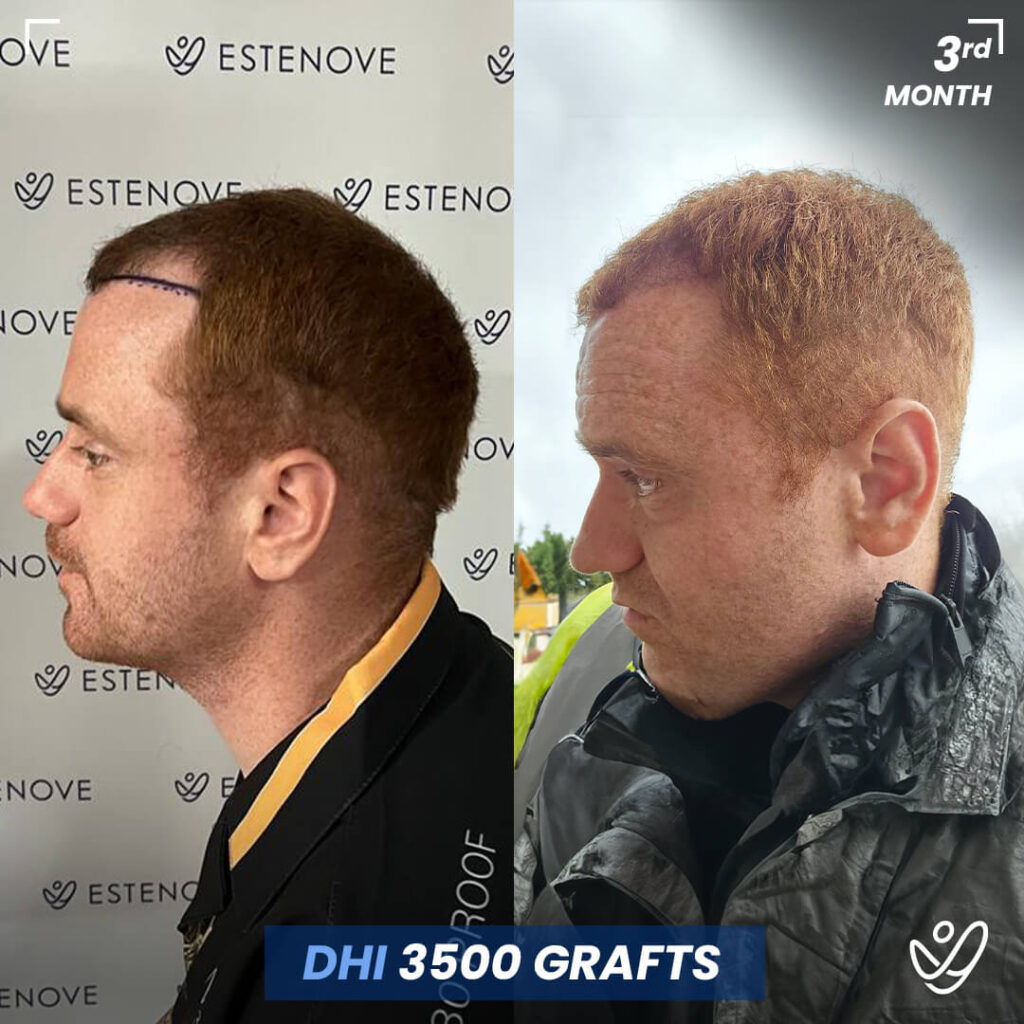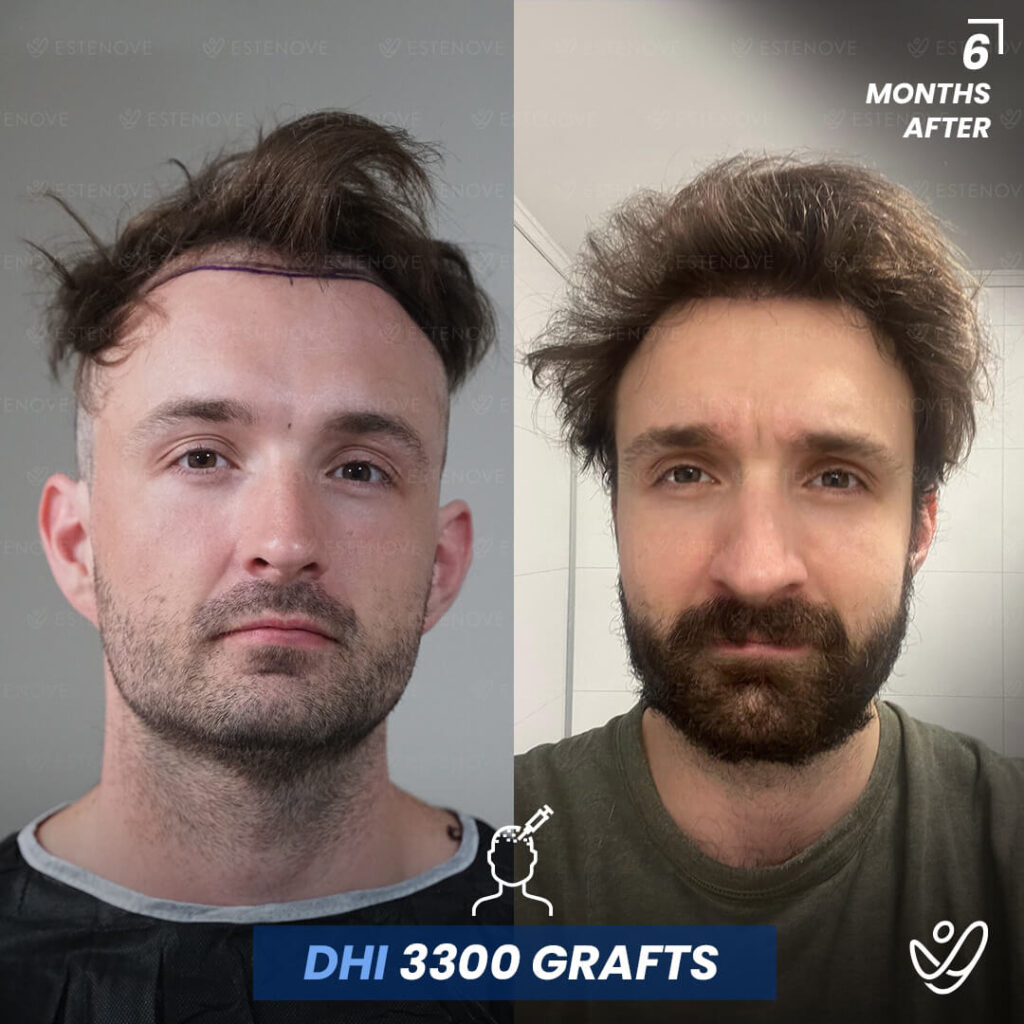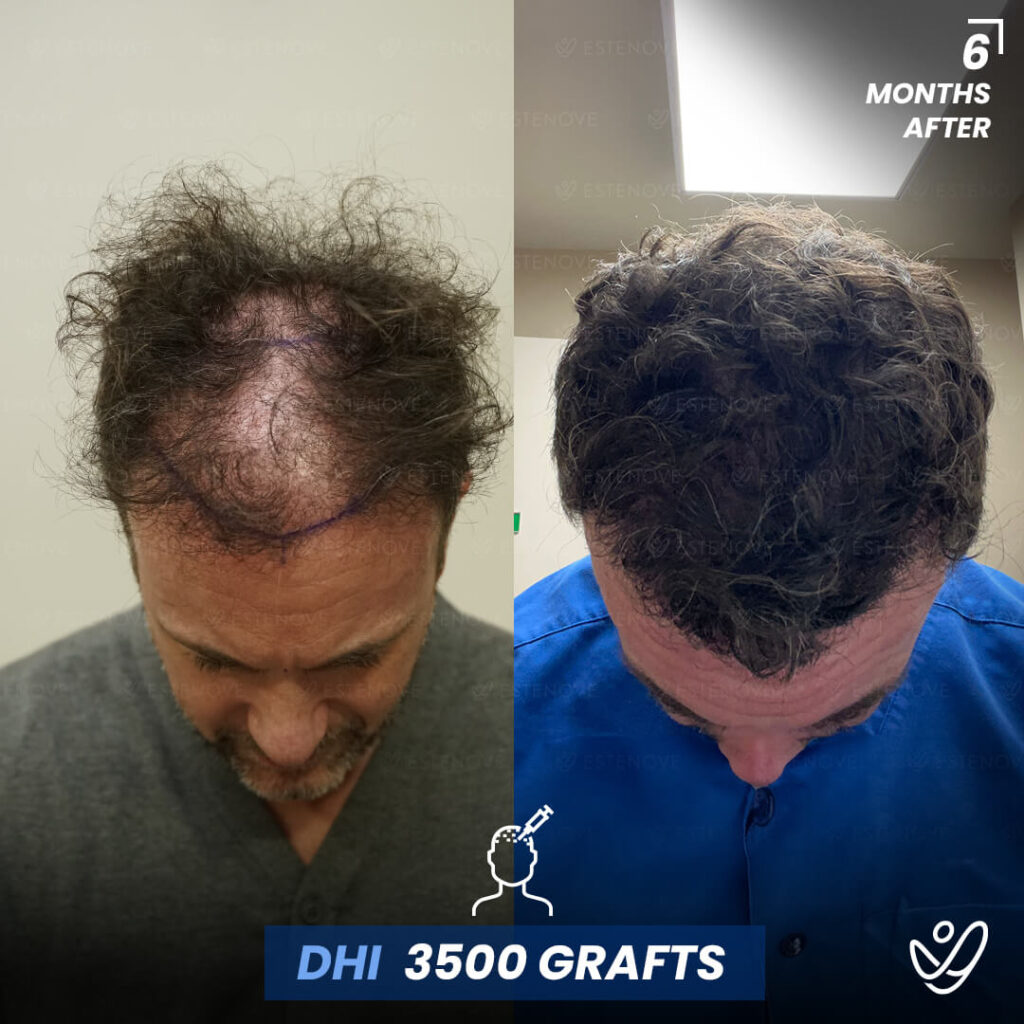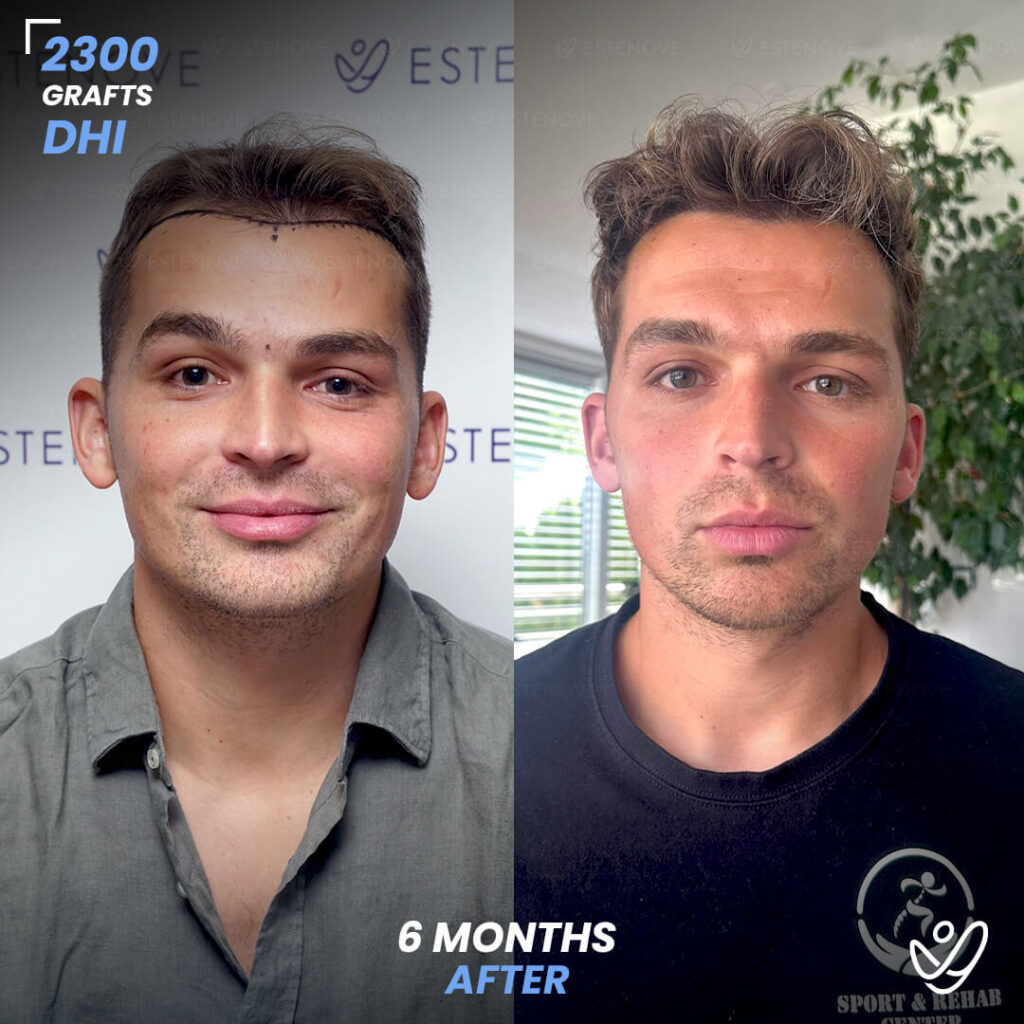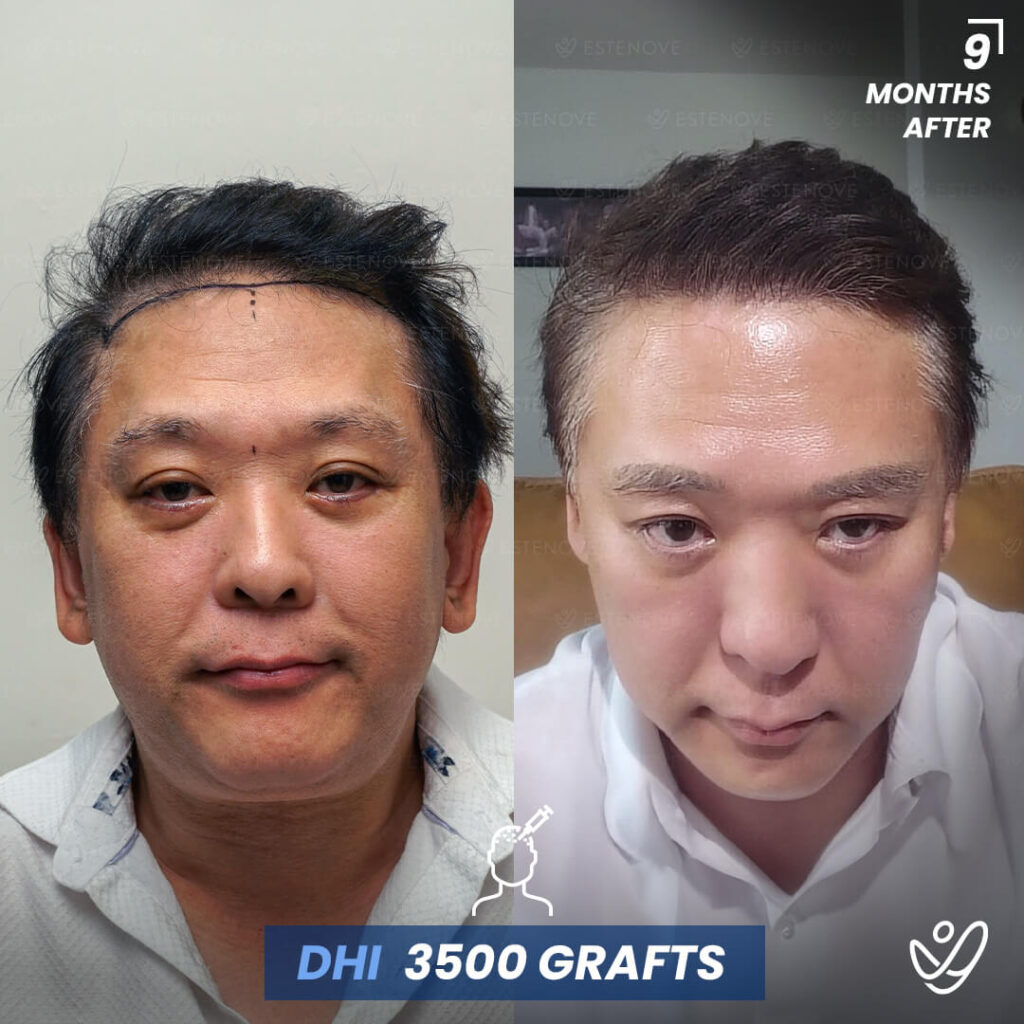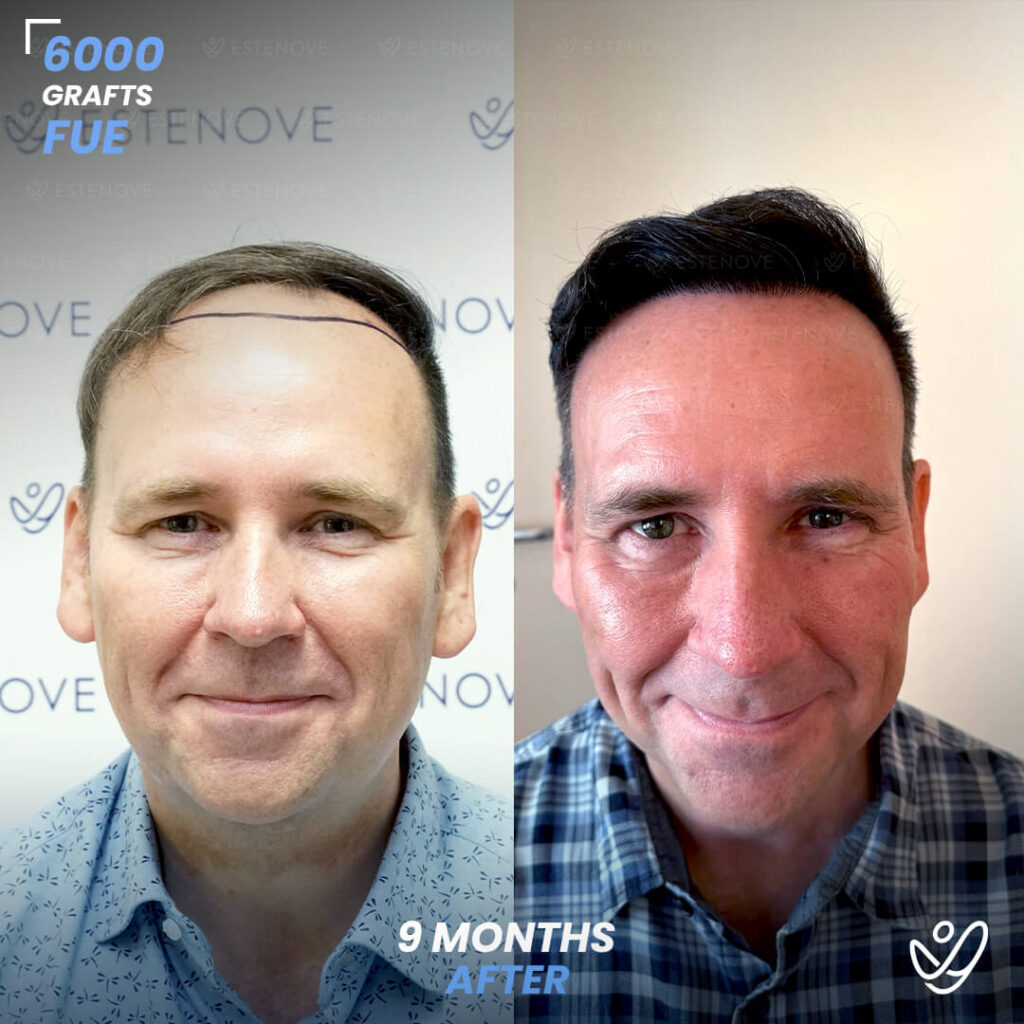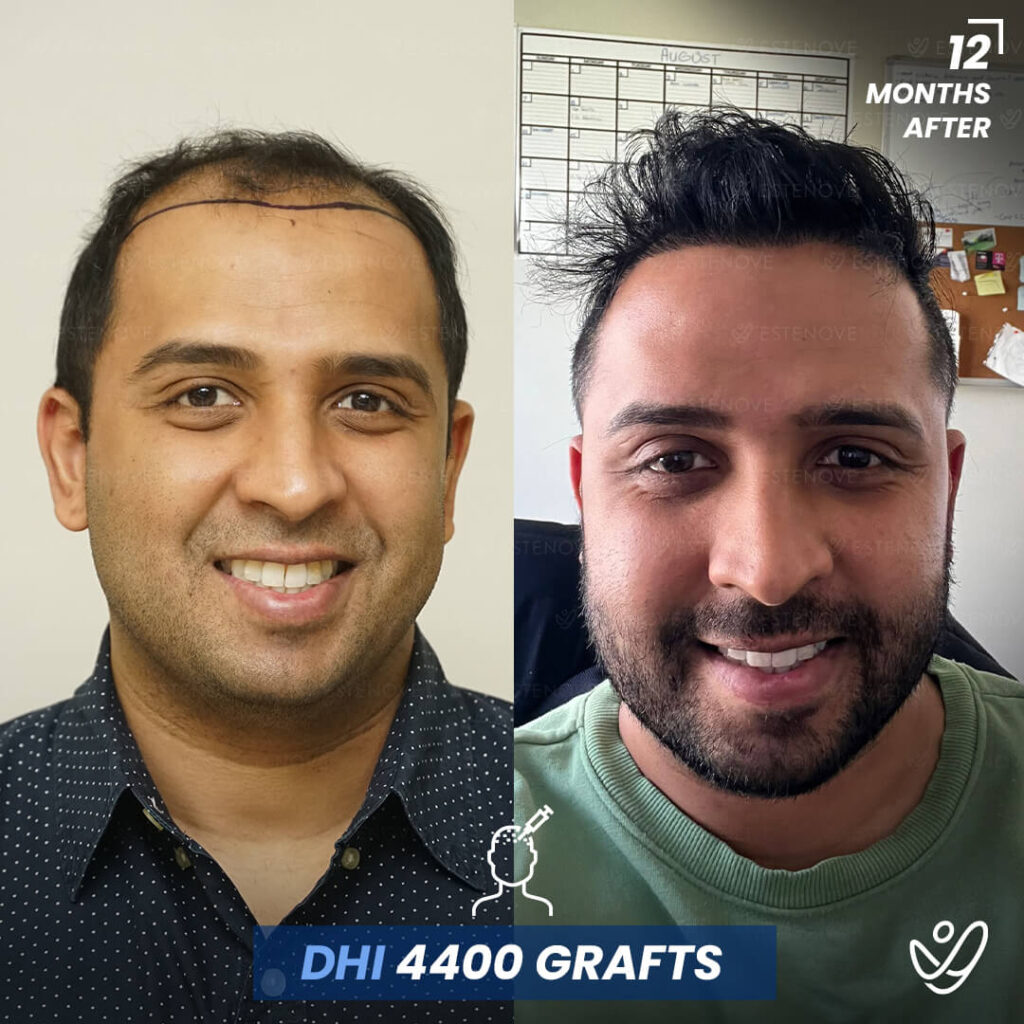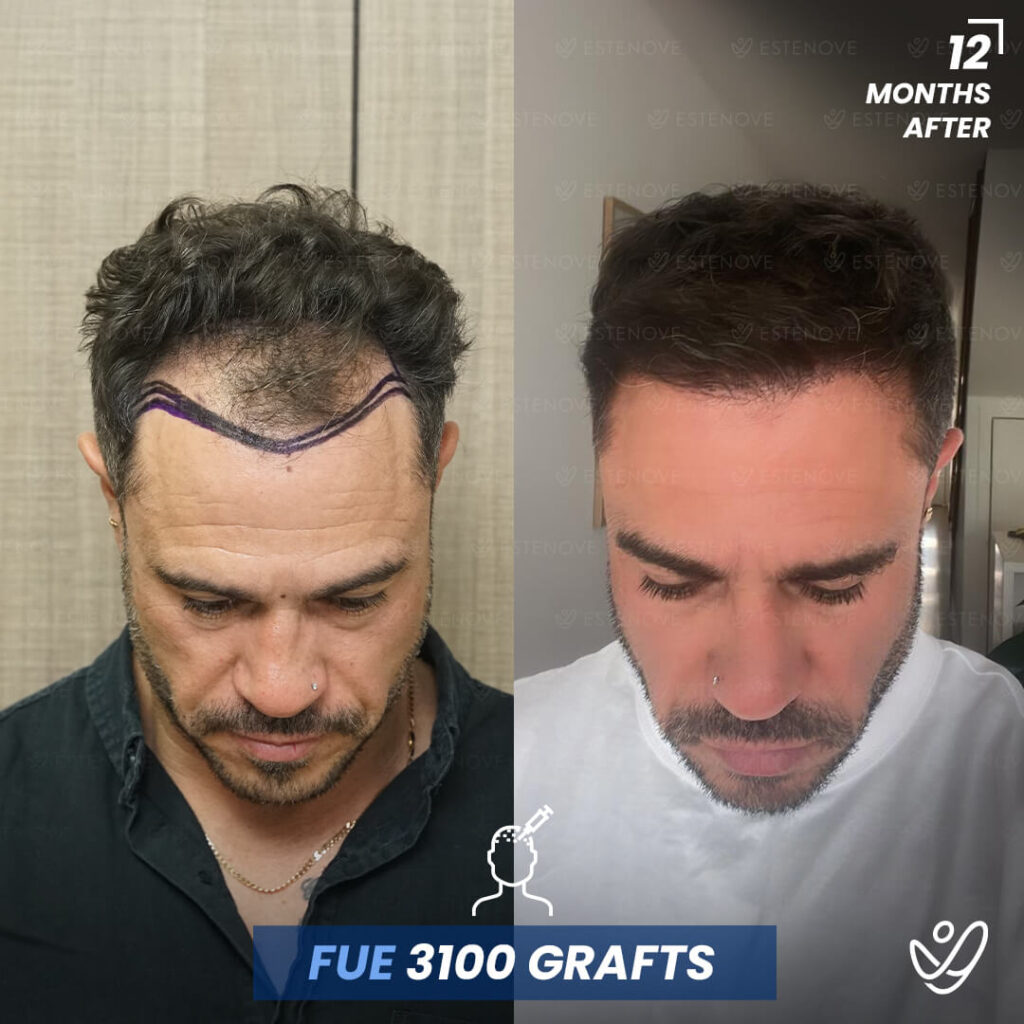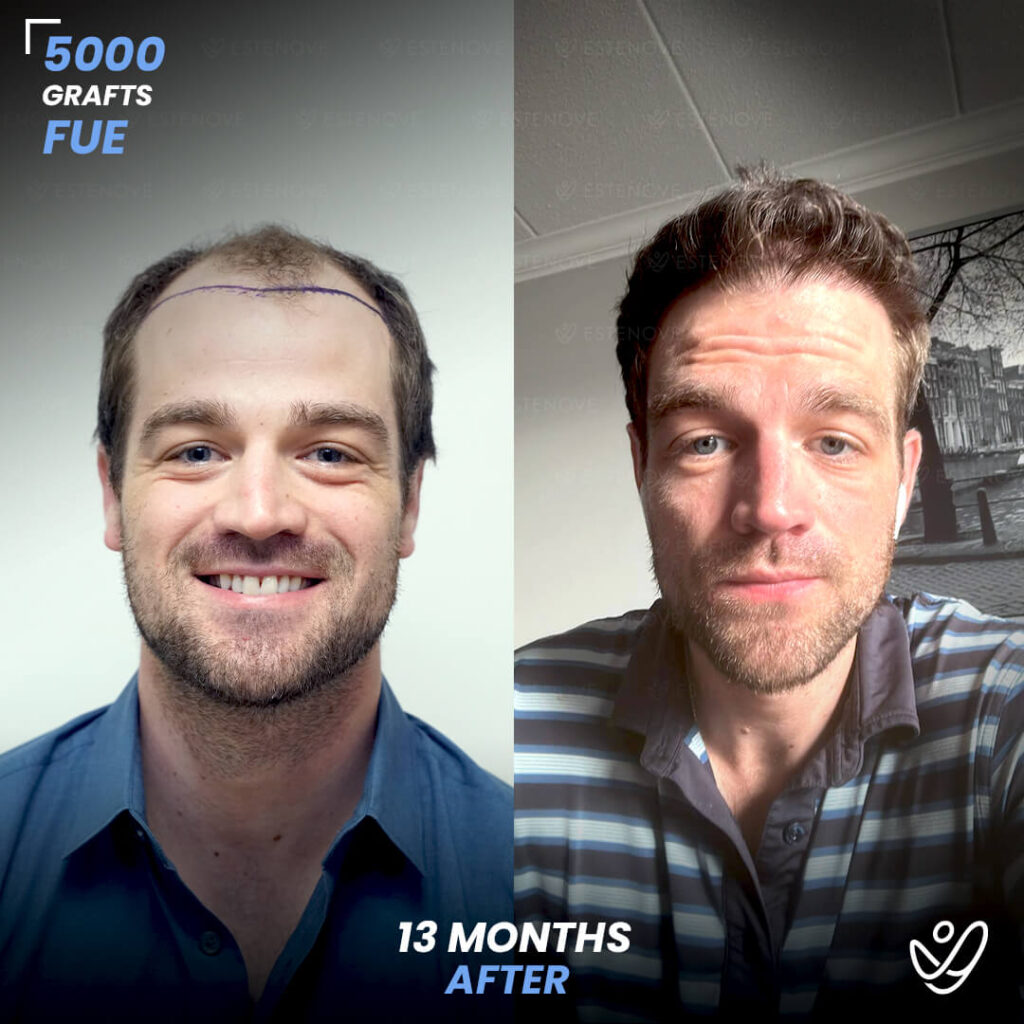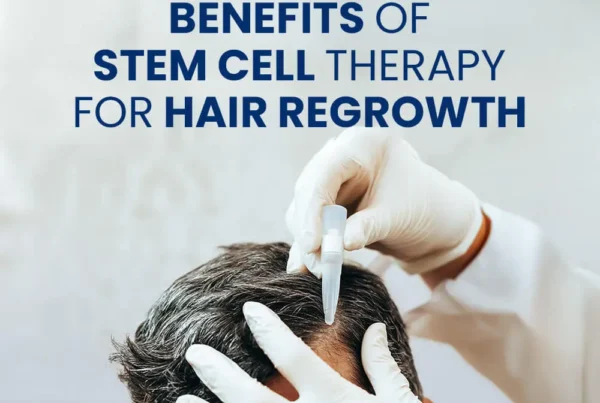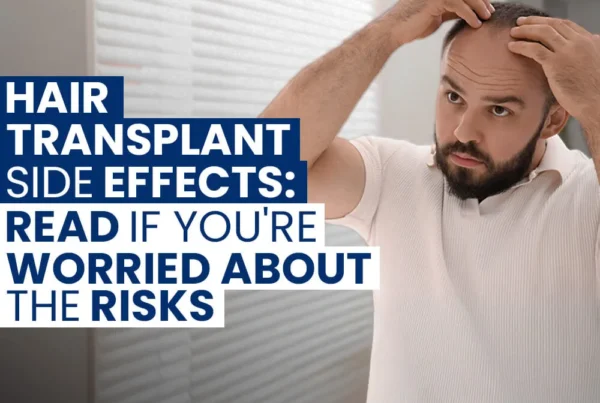
TL;DR: The Recovery Roadmap
-
Days 1–10: Healing & Scab Removal. Redness is normal.
-
Weeks 2–4: Shock Loss. Up to 90% of transplanted hair will fall out. This is normal.
-
Months 3–4: The “Ugly Duckling” Phase. Growth is slow or invisible.
-
Months 5–6: The “Pop” Phase. Visible hair transplant monthly progress begins; coverage reaches ~50%.
-
Month 12: Final Result. Full density and natural texture achieved.
Hair transplant recovery is a gradual journey that extends over 12 months or more. Understanding what happens at each stage: swelling, shock loss, regrowth, and full density -helps patients set realistic expectations and follow better aftercare. This guide outlines the hair transplant recovery timeline in detail, hair transplant month by month progress, and provides practical tips to support optimal hair transplant healing and results.
Hair transplants typically involve extracting hair follicles from the back or sides of the scalp and implanting them into thinning or bald areas. Common methods include FUE and DHI. While techniques vary, all transplanted hair goes through similar healing phases and results don’t appear overnight. Recovery takes time, and the real transformation happens gradually.
Hair Transplant Recovery Timeline: Month by Month
| Time After Surgery | Key Events | What to Expect |
|---|---|---|
| Days 1–10 | Scab shedding phase | Scabs fall off naturally by day 10, many with attached hairs |
| Weeks 2–8 | Shock loss phase | Up to 90% of transplanted hair sheds; natural grafts may fall too |
| Month 2–3 | Stationary phase | Minimal visible growth; around 5% of new hair may emerge |
| Month 4–5 | Early regrowth | 20–30% of transplanted hair starts growing |
| Month 6–7 | Accelerated growth | 40–50% density reached; noticeable improvements |
| Month 8–9 | Thickening phase | 60–80% of hairs mature; blending improves |
| Month 10–12+ | Final results | 80–100% full regrowth; crown may take up to 18 months |
Hair Transplant Progress 1st Week to Year
This visual timeline summarizes hair transplant monthly progress and the typical regrowth milestones after a hair transplant. While each patient’s journey is unique, most follow a similar monthly pattern from scab shedding to final density around 12 months. Below, we’ll break down what to expect at each stage with helpful tips, photos, and aftercare guidance.
First Week After Hair Transplant
The first week is focused on healing and protecting the grafts. Swelling around the forehead or eyes, mild discomfort, and scabbing are common. Crusts begin to form over the grafts and usually fall off by day 7–10.
Follow your surgeon’s post-op instructions closely. Key precautions include:
- Avoid touching or scratching the scalp
- Sleep with your head elevated at a 45° angle to reduce swelling
- Avoid physical activity, sun exposure, or sweating
- Take prescribed antibiotics and painkillers as directed
You can start washing your hair gently after 48 hours. Use a baby shampoo or pH-neutral cleanser and avoid rubbing the scalp. Pat dry never use towels to scrub. If you notice signs of infection, pus, or severe swelling, contact your clinic immediately.
- Male DHI 3500 Grafts 12 Days Before&After Hair Transplant
- Male DHI, 3200 Grafts, 12 Days After Hair Transplant
- Male FUE, 5300 Grafts, 12 Days After Hair Transplant
- Male FUE Hair Transplant, 12 Day After
1 Month After Hair Transplant
By the end of the first month, many patients enter a transitional phase where the healing process gives way to early regrowth. At this stage, you might notice fine, thin hairs emerging from the scalp, these are signs that the follicles are beginning a new growth cycle.
However, it’s also completely normal not to see much visible change yet. In fact, this is typically when shock loss peaks. Most of the transplanted hairs and sometimes even surrounding native hairs may shed during weeks 2-4. This can be unsettling, but it’s a well-documented and temporary part of recovery. Shock loss occurs because the trauma of transplantation pushes follicles into the ‘Telogen’ (resting) phase. The root is alive, but the hair shaft sheds to make room for new, healthy growth. The follicles remain intact beneath the scalp and will soon begin producing new hair.
Some lingering redness, sensitivity, or mild itching may persist, especially in the recipient area. These symptoms are expected and usually fade gradually.
For a more detailed look at this stage, see our 1-Month After Hair Transplant guide.
- Male DHI 3500 Grafts 1 Month Before&After Hair Transplant
- FUE Hair Transplant, 1 Month Before After, 2900 Grafts
- Male, DHI, 1 Month After Hair Transplant, 3000 Grafts
- DHI Hair Transplant, 1 Month Before After, 3200 Grafts
2–4 Months After Hair Transplant
This phase is often called the “quiet regrowth phase.” Between weeks 8 and 16, the majority of transplanted follicles begin to exit dormancy. Most patients see patchy growth and uneven density at first which is completely expected. Hairs that do grow may appear wispy or curled initially due to follicle adaptation.
Growth rates vary, but by the end of month 4, around 30% of transplanted hair may be growing. This is also when natural shedding patterns may resume. More about this stage is available in our 3-Month Recovery Guide.
- Male, DHI, 3 Months After Hair Transplant, 3000 Grafts
- Male, DHI, 3 Months After Hair Transplant, 3200 Grafts
- Male, FUE, 3 Months After Hair Transplant, 2900 Grafts
- Male, DHI, 3 Months After Hair Transplant, 3500 Grafts
Ready to restore your hair?
Get in touch anytime — our experts are here 24/7 for a free online consultation
6 Months After Hair Transplant
Six months post-transplant, most patients see a noticeable improvement in density and coverage. Around 50% of the final result may be visible, and hair strands appear thicker, straighter, and darker compared to earlier phases.
This is often the most satisfying stage so far, especially for those targeting hairline or frontal zone restoration. While full crown growth may lag slightly behind, momentum continues to build. Learn more in our full 6-Month Hair Growth Guide.
- Male FUE 3900 Grafts 6 Months Before&After
- Male DHI 3300 grafts 6 Months Before&After
- Male DHI 3500 grafts 6 Months Before&After
- Male DHI 2300 Grafts 6 Months Before&After
9 Months After Hair Transplant
At nine months, most patients enjoy full, visible transformation. Hair now blends more naturally into surrounding areas, with greater volume and consistency. Roughly 75% or more of transplanted hairs are typically active by this time.
You may begin regular haircuts or even minor styling changes. If you have concerns about slower areas (especially the crown), your surgeon may recommend supportive treatments. Visit our 9-Month Update for detailed insights.
- Male DHI 3500 Grafts 9 Months Before&After
- Male FUE 6000 Grafts 9 Months Before&After
12 Months After Hair Transplant
Twelve months marks the final stage for most patients. At this point, 80–100% of transplanted follicles have matured. Hair is typically thicker, fuller, and longer. You can treat it like your original hair: color it, cut it, and style as desired.
That said, crown recovery or dense packing cases may still show gradual improvements into months 15–18. Long-term results depend on factors like donor area quality, post-op care, and genetic predisposition. For a full overview, see our 12-Month After Hair Transplant
- Male DHI 4400 grafts 12 Months Before&After
- Male FUE 3100 grafts 12 Months Before&After
- Hair&Beard Transplant 3300 grafts 12 Months Before&After
- Male FUE 5000 Grafts 13 Months Before&After

Calculate the number of grafts needed for your hair transplant and get an estimated cost for various destinations
Managing Discomfort and Side Effects
Some discomfort is expected during the early phases of recovery. You may experience:
- Swelling: Especially around the forehead and eyes in the first 2–3 days
- Itching: A normal sign of healing, avoid scratching
- Numbness: Common around donor or recipient areas, typically fades in weeks
- Scabbing & Redness: Peaks around days 3–7, then begins to resolve
When to Contact Your Clinic
- Persistent bleeding or oozing from the scalp after Day 3
- High fever or flu-like symptoms
- Excessive swelling lasting beyond Day 5
- Pus, unusual redness, or foul odor at the transplant site
Long-Term Care for Transplanted Hair
Once your new hair grows in, maintaining results is key. Follow these principles:
- Use mild, sulfate-free shampoos
- Avoid tight hairstyles or frequent heat styling
- Protect your scalp from sun exposure (SPF sprays or hats)
These habits not only promote long-term growth but also protect the viability of your transplanted follicles. Read more about the factors that impact graft survival after hair transplant.
Adjunct treatments like PRP therapy or supplements (biotin, zinc, iron) may also support long-term growth -consult your doctor before starting.
Frequently Asked Questions
How long until I see full results?
When can I go back to the gym?
What if I see no growth after 4 months?
Can I wear a hat after transplant?
Will I need a second transplant?
Hair transplant recovery is a marathon, not a sprint. From early scabbing to final density, each phase plays a critical role. By following aftercare instructions, attending checkups, and caring for your scalp long-term, you set yourself up for success. Understanding the hair transplant progress by month will help you manage expectations and avoid unnecessary panic during the shedding phase.
Ready to start your hair restoration journey? Book a free consultation to receive a personalized graft plan and find out how much coverage you can get for a fixed price—no per-graft surprises.
Sources
- Hair Transplantation: Basic Concepts and New Advances – NCBI https://pmc.ncbi.nlm.nih.gov/articles/PMC6388556/
- Hair Transplant Surgery – American Academy of Dermatology https://www.aad.org/public/diseases/hair-loss/treatment/transplant
- International Society of Hair Restoration Surgery (ISHRS) Forum, Vol. 26, Issue 5 https://www.ishrs-htforum.org/content/htfi/26/5/local/front-matter.pdf
- Complications in Hair Transplantation – Journal of Cutaneous and Aesthetic Surgery https://www.ncbi.nlm.nih.gov/pmc/articles/PMC6371733/
- Hair Transplantation – StatPearls – NCBI Bookshelf https://www.ncbi.nlm.nih.gov/books/NBK547740/
- Surgical Candidacy in Pattern Hair Loss – Indian Journal of Plastic Surgery https://www.ncbi.nlm.nih.gov/pmc/articles/PMC8719975/
Medical Disclaimer: The hair transplant progress by month described above represents the average patient journey. Individual growth rates may vary based on age, health, and hair texture. This timeline was medically reviewed by the Estenove Clinical Board.

